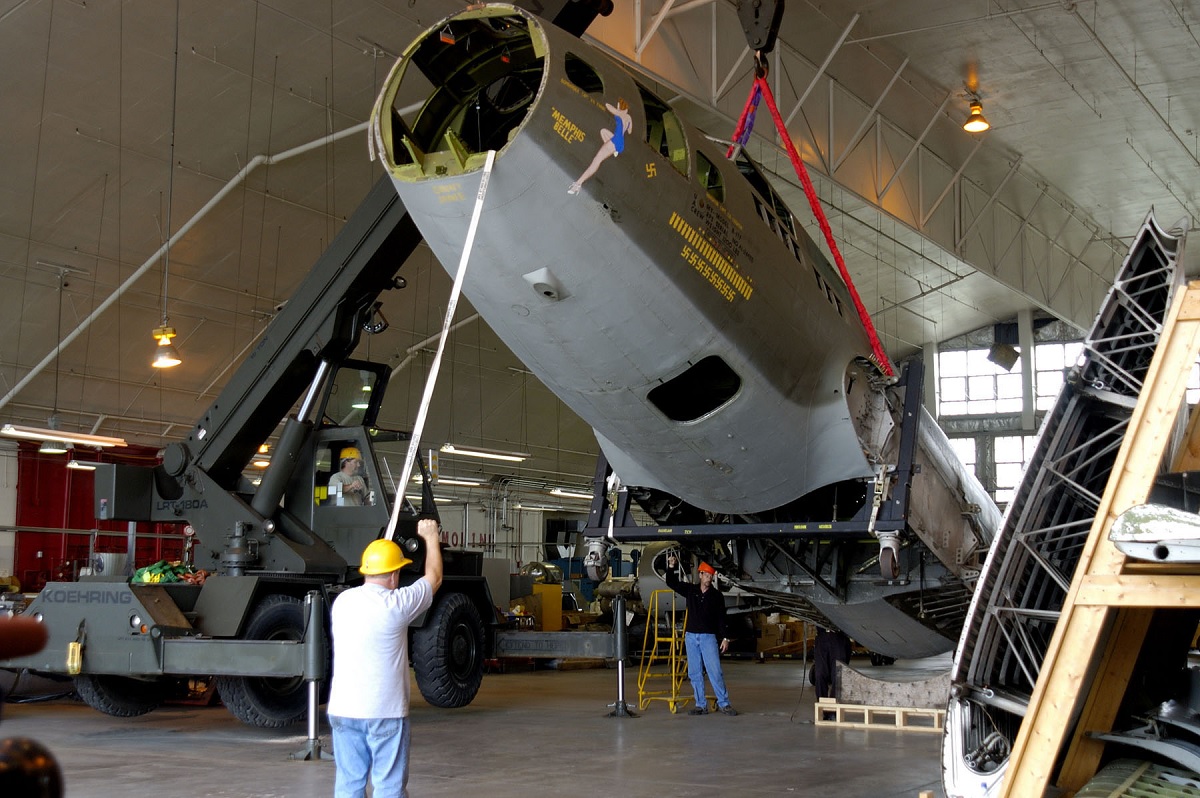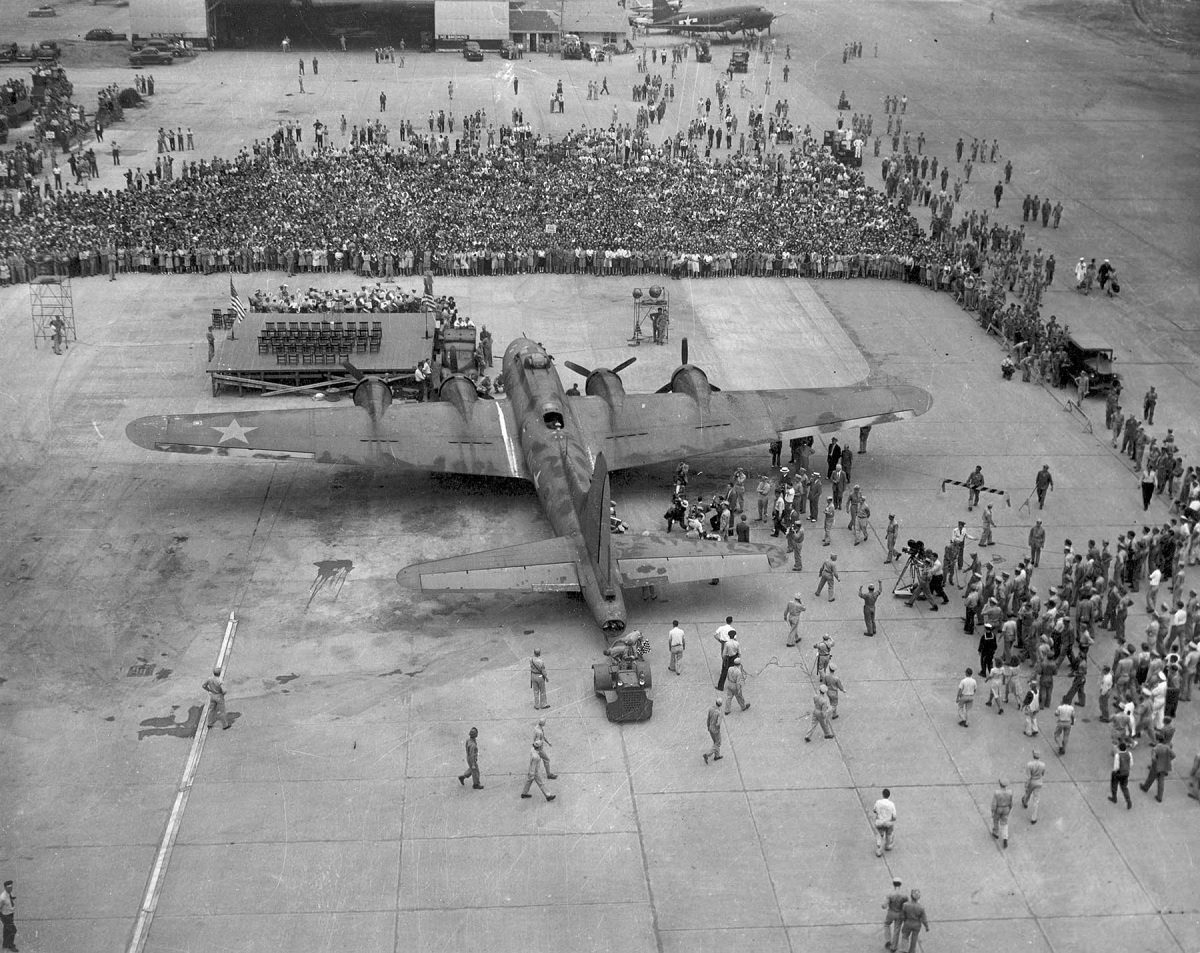The B-17F Memphis Belle is a symbol for the countless bomber crews, maintainers, and others who supported the bomber mission and whose dedication and sacrifice helped end World War II
On May 17, 1943, one of the most famous icons of World War II was reported back to work precisely 75 years after its crew completed their final mission in the war against Nazi Germany.
The B-17F Memphis Belle, the first U.S. Army Air Forces (USAAF) heavy bomber to complete 25 missions over Europe and return to the United States, was placed on public display at the National Museum of the U.S. Air Force on May 17, 2018, according to Rob Bardua’s article, National Museum of the U.S. Air Force, in the article B-17F Memphis Belle to be placed on public display on May 17, 2018, at National Museum USAF.
The aircraft’s name is a tribute to the Memphis, Tennessee, native Margaret Polk, the pilot’s girlfriend during the war. Morgan picked the now-famous image from a George Petty graphic that appeared in Esquire magazine in 1941.

Flying in the 324th Bomb Squadron of the 91st Bomb Group (Heavy), the Memphis Belle and its crew of 10 flew their first combat mission on Nov. 7, 1942. USAAF heavy bombers sometimes flew without an escort for a portion of their missions until the introduction of long-range fighters later in the war. It was exceedingly unlikely that a bomber crew would complete their minimum 25 missions when confronted with swarms of enemy aircraft, lethal antiaircraft fire, and a shortage of friendly fighters in the target area.

With their 25th combat mission against the naval yard in Lorient, France, on May 17, 1943, the crew of the Memphis Belle beat the odds. This raid was Belle’s 24th combat mission, which is interesting because the original crew occasionally flew missions on other 91st BG (H) B-17s (and others took the Belle on some missions also). In order to strike Kiel, Germany, on May 19, the Memphis Belle conducted its 25th combat mission while being manned by a different crew.

After they returned to the country in June 1943, the crew of the Memphis Belle flew the aircraft throughout the country for three months to raise money for the war effort and boost morale. After the Bond tour and the 1944 William Wyler documentary film The Memphis Belle, which included actual action footage, the aircraft, and its crew gained notoriety. When a big-budget movie of the same name was released in 1990, their notoriety rose.
Many people view the tale of the Memphis Belle as a timeless representation of all the heroic USAAF bomber crews that fought Nazi Germany during World War II. The Memphis Belle, which had spent decades on display in Memphis, finally made its way to the National Museum of the United States Air Force in October 2005 in need of a full restoration. The Memphis Belle will be meticulously conserved and restored by museum specialists over the course of several years, including corrosion treatment, the complete outfitting of missing equipment, and precise markings.

The Memphis Belle is a national treasure, according to Jeff Duford, curator of the National Museum of the U.S. Air Force, and it serves as the focal point of a brand-new, significant exhibition in the gallery’s WWII section.
“The B-17F Memphis Belle is an icon that represents the thousands of bomber crews, maintainers, and others supporting the bomber mission, whose service and sacrifice helped win WWII,” said Duford. “Work is underway to showcase the aircraft in the WWII Gallery, and the surrounding exhibit will include interactive displays, rare archival film footage, and many personal artifacts which have never been seen before by our visitors.”

Additional source: National Museum of the U.S. Air Force
Photo by U.S. Air Force



